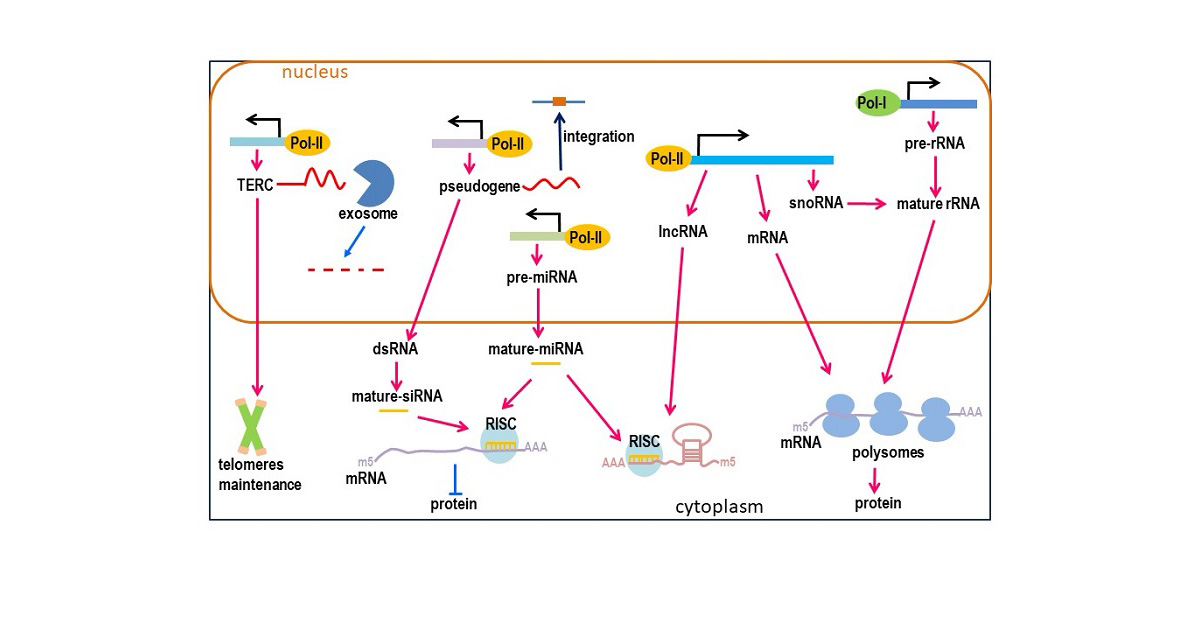Non-coding RNAs: Genomics, Biogenesis, Mechanisms, and Functions
A special issue of Life (ISSN 2075-1729). This special issue belongs to the section "Physiology and Pathology".
Deadline for manuscript submissions: closed (31 March 2025) | Viewed by 2961

Special Issue Editor
2. Graduate Institute of Aerospace and Undersea Medicine, National Defense Medical Center, Taipei, Taiwan
Interests: melatonin receptor; membranous nephropathy; non-coding RNA
Special Issues, Collections and Topics in MDPI journals
Special Issue Information
Dear Colleagues,
Non-coding RNAs (ncRNAs) represent a diverse group of transcripts that do not encode proteins but play pivotal roles as regulators across various biological functions and species. This category encompasses both housekeeping ncRNAs (e.g., rRNA, snoRNA, pseudogenes, and TERC) and regulatory ncRNAs (such as siRNA, miRNA, eRNA, lncRNA, and circRNA), each holding significant importance. Understanding the regulation of ncRNA levels is crucial for uncovering their biological significance. Quality-control mechanisms govern ncRNA abundance through biogenesis, processing, and degradation pathways. However, there's still a knowledge gap regarding the mechanisms and biological importance of these quality-control systems that manage ncRNA functions.
This Special Issue aims to showcase recent advances in comprehending the molecular mechanisms underlying ncRNA abundance. It predominantly focuses on fundamental research providing novel insights into controlling ncRNA levels, as well as exploring clinical, diagnostic, and therapeutic perspectives of ncRNA-mediated physiological conditions. We welcome the submission of research and review articles exploring these themes.
Dr. Yen-Sung Huang
Guest Editor
Manuscript Submission Information
Manuscripts should be submitted online at www.mdpi.com by registering and logging in to this website. Once you are registered, click here to go to the submission form. Manuscripts can be submitted until the deadline. All submissions that pass pre-check are peer-reviewed. Accepted papers will be published continuously in the journal (as soon as accepted) and will be listed together on the special issue website. Research articles, review articles as well as short communications are invited. For planned papers, a title and short abstract (about 250 words) can be sent to the Editorial Office for assessment.
Submitted manuscripts should not have been published previously, nor be under consideration for publication elsewhere (except conference proceedings papers). All manuscripts are thoroughly refereed through a single-blind peer-review process. A guide for authors and other relevant information for submission of manuscripts is available on the Instructions for Authors page. Life is an international peer-reviewed open access monthly journal published by MDPI.
Please visit the Instructions for Authors page before submitting a manuscript. The Article Processing Charge (APC) for publication in this open access journal is 2600 CHF (Swiss Francs). Submitted papers should be well formatted and use good English. Authors may use MDPI's English editing service prior to publication or during author revisions.
Keywords
- ncRNA-interacting proteins
- ncRNA modification
- ncRNA biogenesis
- ncRNA degradation
- ncRNA decay
- function
- disease
- therapeutic targets
Benefits of Publishing in a Special Issue
- Ease of navigation: Grouping papers by topic helps scholars navigate broad scope journals more efficiently.
- Greater discoverability: Special Issues support the reach and impact of scientific research. Articles in Special Issues are more discoverable and cited more frequently.
- Expansion of research network: Special Issues facilitate connections among authors, fostering scientific collaborations.
- External promotion: Articles in Special Issues are often promoted through the journal's social media, increasing their visibility.
- Reprint: MDPI Books provides the opportunity to republish successful Special Issues in book format, both online and in print.
Further information on MDPI's Special Issue policies can be found here.






